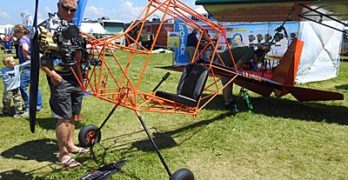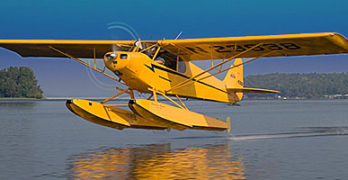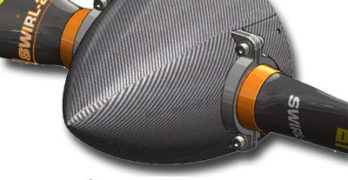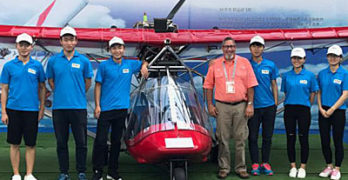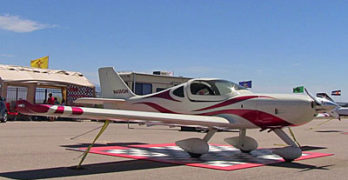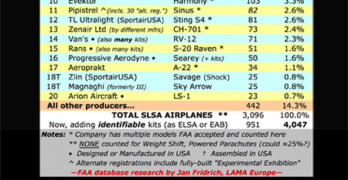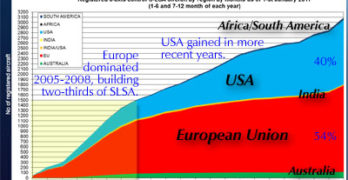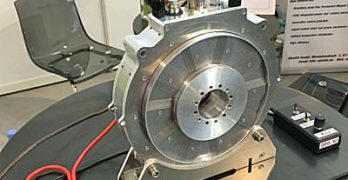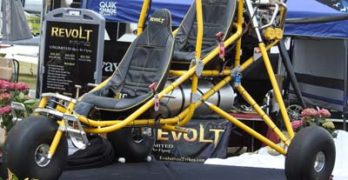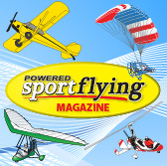If you know the Part 103 category of the FAA regulations, you know these are the lightest aircraft in aviation (that is, man-carrying aircraft; drones excepted).* After years of disappearing, Part 103 entries have come back more recently and at AirVenture Oshkosh 2017, we saw another.
This is the Just Aircraft Superlite, except that name was never certain and has (since Oshkosh) been taken off the list as a model name. Until they put a fresh name on it, I will call it Just 103.
Part 103, as most readers may know, requires no pilot certificate (really, none!). They also require no FAA registration or N-numbers. Since 1982, you need no aviation medical to fly one. Plus, they can be built ready-to-fly… or in kit form of any percentage. For 35 years now — the rule went effective in September of 1982 — Part 103 ultralight vehicles have been part of the aviation firmament.
Search Results for : trikes
Not finding exactly what you expected? Try our advanced search option.
Select a manufacturer to go straight to all our content about that manufacturer.
Select an aircraft model to go straight to all our content about that model.
Summertime is Float Flying Time; Legend Cub Has the Gear
When summer rolls around and the sweat rolls off, it’s a perfect time to think about float flying. In the Light-Sport Aircraft or light kit-built airplane space, you are lucky to have a broad number of choices. This includes seaplanes (with boat hulls), floatplanes (land planes equipped with floats) or either of those on aircraft such as weight-shift trikes.
Legend Cub is a modernized version of the old Piper Cub. Sulphur Springs, Texas-based Legend was an early entrant to the LSA world. They’ve done well enough under the leadership of Darin Hart to occupy the #5 spot on our all-time-fleet ranking of Special LSA; they are one of only five LSA producers with more than 200 aircraft registered with FAA.
American Legend flew a float-equipped Legend Cub way back on March 11, 2005 even before the first Special LSA were accepted by FAA.
Legend’s floatplane offering boasts advantages. “It weighs less than comparable aircraft, cost less, and came with the added advantage of doors and windows on both sides of the cockpit,” observed the company.
Get Ready to Party with DUC Props Like It’s 2017!
If you live in France or are traveling to the country (soon!), you might want to join the party… the DUC Propellers party, that is. It is happening in a few days.
In December 2016 DUC Propellers moved new facilities (nearby photo) to be closer to the airfield for tests and to have a more spacious infrastructure to expedite development.
To celebrate their new quarters, on Saturday, June 24th, 2017, DUC Propellers announced they will “organize an exceptional party to celebrate the inauguration of our new location on the Villefranche-Tarare Aerodrome (LFHV) in Frontenas, France.” They plan a big event with more than 500 guests expected along with participation of many operators from the airfield.
“Lot of guests will arrive all long the day by plane but the party will officially start at 8 p.m. with the visit of the new facilities, a photoBooth on flying topics, a Beaujolais culinary discovery, a cocktail dinner, a music DJ, and some animations throughout the night,” said DUC representatives.
China Embracing LSA and Light Aircraft with Help from ASA
One of the big hopes of the global aviation community — besides the shared wish for more young people to take up flying — is that Chinese interest in aviation grows.
China has convincingly proven it can build vast numbers of bridges, apartments, railways, and all sorts of major infrastructure. Can their people develop an interest in flying? Why might this be important to Americans?
To date, Chinese investors have bought all or portions of big GA companies, such as Cirrus, Mooney, Continental Motors, Glasair, and more. Yet those acquisitions do not start Chinese youth on their way to enjoy flying as Americans and Europeans do today.
Real growth needs to be grassroots.
Chinese leaders have staffed their airlines and their military, but from my own close-up view, the number of Chinese involved with sport or recreational flying is a very small number, microscopic compared to their immense population.
One organization working to change that is Aero Sports Association, run by the tireless, ever-positive Shudong Li a former Chinese national who today lives and works in the San Francisco area.
US Flight Expo Wraps First Year Event in Arizona
The Marana Regional Airport, in Marana Arizona was the site of the first annual U.S. Flight Expo May 3–6, 2017. The west coast of the U.S. appears to lack major aviation events of the sort commonly seen in the easter U.S. This is especially odd considering the large number of pilots and aircraft in western states! (Some have observed how western populations are spread over a much larger area, which possibly accounts for this disparity. —DJ)
One of the most successful annual aviation events not sponsored by a member organization is the U.S. Sport Aviation Expo in Sebring Florida, which will celebrate its 14th year in 2018! Others have followed (Midwest LSA Expo &DeLand) but these sector-specific shows are still concentrated in the east.
So it was about time for another western event other than Copperstate, which will celebrate its 45th year in 2017.
Using the template that original director Robert Woods used to make Sebring such a success, Greg Hobbs — one of the leading organizers of the U.S.
Light-Sport Aircraft Market Shares for Fleet and 2016
A dozen years after FAA created aviation’s newest sector, we have a new leader among manufacturers of fully built Light-Sport Aircraft. CubCrafters has been moving upward with several years hitting 50 deliveries. In 2016 the west coast builder finally topped perennial leader Flight Design, which slipped to second place. The CT builder had occupied the #1 position since the beginning of Light-Sport Aircraft. Only four aircraft separate the two brands. Note: this article has been updated twice; see at end. —DJ
In the single-year race, Czech Sport Aircraft won convincingly with almost double the next closest producer. The Czech builder performed well in 2015 but significantly increased last year. Congratulations to both companies.
To explain further, our “whole fleet” market share chart — the one we have published going back to 2006 — keeps track of all Special LSA (SLSA) airplanes in the U.S. fleet. Regretfully, we are unable to properly account for weight shift trikes, powered parachutes, gyroplanes, or motorgliders because the database is too variable.
USA Steadily Gained Light-Sport Aircraft Manufacturer Share
April 2017 logged 12 years of Light-Sport Aircraft. The FAA regulation creating the category was introduced in 2004 but it was at Sun ‘n Fun 2005 that the agency presented Evektor SportStar and the Flight Design CT the first and second Special Airworthiness certificates.
My friend and LAMA associate, Jan Fridrich, gave a presentation at Aero 2017 showing many graphs that examine this new airplane sector and how it has developed over the last decade. This article looks at a portion of his analysis.
In those dozen years, the market has developed interestingly.
In the first vigorous years of growth — filling pent-up demand for a two-seat aircraft pilots could fly without a medical — European light aircraft producers dominated the market (chart). Jan’s home country, the Czech Republic, was one of the most prolific, in the early days leading all other countries. Czech designs remain a key player but the field has shifted.
Electric Propulsion Innovations at Aero 2017
Electric aircraft may still have minuscule market share but innovations could change that in the near future. As Aero correspondent, Roy Beisswenger wrote, “This is a rapidly changing technology with both motors and applications showing up all over Aero Friedrichshafen.” This year Aero management concentrated them in one of the big halls where small startups to the heavyweights were located. Thanks to Roy for several reports from Aero, of which this is one. —DJ
Many of the exhibited motors are for very light applications such as light-weight shift control trikes or gliders but motors are becoming more powerful. With an increase in power, new technical problems need to become overcome. For example, the larger the power capability of the motor, the more cooling is required for the motor. Smaller motors are mostly air-cooled, but some of the medium and larger motors require liquid cooling. This doesn’t mean that the motors have radiators, but liquid is built into the motor to help wick heat away from hot spots that are created when electricity is converted to mechanical power.
Light-Sport, Light Kit Aircraft and Ultralights at Sun ‘n Fun 2017
The big show at Lakeland, Florida is open and happening. Today (Tuesday April 4th) is opening day; the event runs through Sunday, April 9th. Along with Videoman Dave, we’ve already starting making the rounds and we’ve found plenty to see.
As you see in the photos, Evolution Trikes made a dramatic announcement of a new weight shift trike model called Revolt. In communications, they’ve spelled it RevoLT, which you could interpret to mean Revo (their super deluxe model) Light. Yet it’s probably more correct to call it a different Revo without the fancy pants but with some cool new features.
Among them, Revolt has giant tundra tires not often seen on trikes. Paired with that long shock absorber legs worthy of a SuperSTOL or Outback Shock. Like their lower priced single seater, Rev, Revolt does away with the forward strut, sometimes called a compression strut, which leaves both occupants but particularly the front occupant or solo pilot with an enormous unobstructed view.
Powered Sport Flying magazine
- « Previous Page
- 1
- …
- 8
- 9
- 10
- 11
- 12
- …
- 34
- Next Page »


